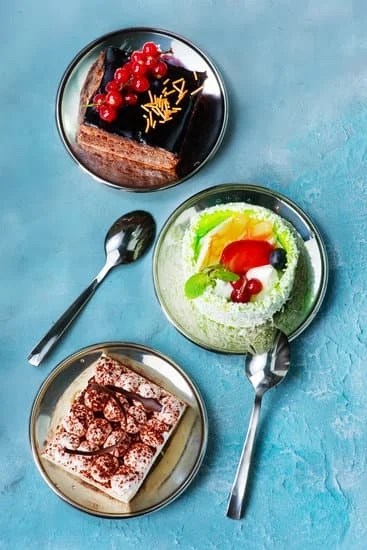Fondant decorations are a fantastic way to add creativity and elegance to cakes. In this article, we will explore the process of how to put fondant decorations on a cake, from choosing the right type of fondant to troubleshooting common issues that may arise during the decorating process.
When it comes to creating stunning fondant decorations, there are various types to consider, such as cut-outs, embossed designs, and molded shapes. Each type offers its own unique look and requires different techniques for application. By understanding the variety of options available, you can choose the perfect fondant decoration to suit your cake design.
Before getting started with applying fondant decorations, it is essential to select the right kind of fondant for your project. Whether you opt for store-bought or homemade fondant, ensuring you have the proper consistency and texture will make a significant difference in the final outcome of your cake decoration. By following a step-by-step guide and utilizing helpful tips for success, you can confidently create beautifully decorated cakes that showcase your artistic skills.
Types of Fondant Decorations (Cut-Outs, Embossed, Molded, Etc)
Fondant decorations come in various forms, each offering a unique way to elevate the appearance of your cake. One popular type of fondant decoration is cut-outs, where rolled fondant is shaped using cookie cutters or specialty cut-out tools to create intricate designs. These cut-outs can range from simple shapes like stars and hearts to more elaborate patterns like flowers and lace designs. Cut-outs allow for endless creativity and customization when decorating cakes.
Another type of fondant decoration is embossed fondant, which involves pressing textured mats or rollers onto rolled fondant to create raised patterns or designs. This technique adds depth and visual interest to the cake’s surface, giving it a luxurious and professional finish. Embossed fondant decorations are perfect for adding a touch of elegance to wedding cakes or sophisticated celebration cakes.
Molded fondant decorations are also a popular choice for cake decorators looking to add dimension and detail to their creations. By using silicone molds or hand-shaping techniques, intricate figures, flowers, or other sculpted elements can be crafted from fondant and placed on top of the cake.
Molded fondant decorations allow for precise detailing and realistic representations on cakes, making them ideal for themed parties or special occasions where a specific design is needed. Learning how to put fondant decorations on a cake adds a personal touch that will impress guests and elevate your baking skills.
Choosing the Right Fondant for Your Decorations
When it comes to choosing the right fondant for your cake decorations, there are a few key factors to consider. From taste and texture to workability and color options, selecting the perfect fondant can make all the difference in the outcome of your creation. Here are some tips on how to choose the best fondant for your next cake project:
- Consider the flavor: Fondant comes in various flavors such as vanilla, chocolate, or even fruity options like lemon or raspberry. Think about what will complement the flavors of your cake and choose accordingly.
- Texture matters: Some fondants are softer and more pliable, while others are firmer and better suited for intricate designs. Depending on your skill level and the type of decorations you want to create, select a fondant that matches your needs.
- Color selection: If you need a specific color for your decorations, consider whether you want pre-colored fondant or if you prefer to dye it yourself. Make sure the fondant is easy to tint without becoming too sticky or dry.
Once you have chosen the right fondant for your cake decorations, it’s important to properly prepare it before application. Kneading the fondant until it’s soft and pliable will make it easier to work with and prevent any cracking or tearing during the decorating process.
- Warm up a small amount of fondant in your hands by kneading gently until it becomes more pliable.
- Dust your work surface with powdered sugar or cornstarch to prevent sticking.
- Roll out the fondant using a rolling pin to an even thickness, making sure it’s large enough to cover or create your desired decorations.
By carefully selecting and preparing the right fondand for your cake decorations, you’ll set yourself up for success when it comes time to apply them onto your beautifully baked masterpiece.
Preparing Your Cake for Fondant Decorations (Crumb Coating, Smoothing Icing, Etc)
When it comes to creating a beautifully decorated cake with fondant, proper preparation is key. Preparing your cake for fondant decorations involves a few important steps to ensure that your final product looks professional and flawless. One of the first steps in this process is crumb coating your cake. Crumb coating helps to seal in any loose crumbs and provides a smooth surface for the fondant to adhere to.
Crumb Coating
To crumb coat your cake, start by applying a thin layer of icing or buttercream all over the cake. This initial layer acts as a base coat to trap any loose crumbs before adding the final layer of icing or fondant. Use a spatula to spread the icing evenly and make sure to cover the entire surface of the cake.
Smoothing Icing
Once you have crumb coated your cake, it’s important to smooth out the icing or buttercream before applying the fondant. To achieve a perfectly smooth surface, use a bench scraper or an offset spatula to gently smooth out any bumps or imperfections on the frosting. Take your time with this step as a smooth surface will result in a more polished final look for your fondant decorations.
Now that you have properly crumb coated and smoothed out your cake, it is ready for the next step which is applying fondant decorations. In the following section, we will cover a step-by-step guide on how to put fondant decorations on a cake effectively and achieve stunning results that will impress everyone at your next celebration.
Step-by-Step Guide on Applying Fondant Decorations
Fondant decorations can elevate the look of any cake, adding a touch of elegance and creativity. Knowing how to put fondant decorations on a cake is a skill that can take your baking game to the next level. Whether you’re a beginner or an experienced baker looking to refine your techniques, following a step-by-step guide can help you achieve professional-looking results.
To begin with, make sure your cake is properly prepared for fondant decorations. This includes crumb coating the cake with a thin layer of icing to seal in any loose crumbs, as well as smoothing out the surface for a polished finish. Once your cake is ready, select the type of fondant decorations you want to use – whether it’s cut-outs, embossed designs, molded figures, or any other creative shapes.
Next, roll out your fondant on a clean surface dusted with powdered sugar to prevent sticking. Use a rolling pin to gently flatten the fondant to your desired thickness. Carefully lift the rolled fondant using a rolling pin or by draping it over your forearm and lay it onto the cake.
Smooth out any air bubbles or wrinkles by gently patting and shaping the fondant against the cake’s surface. Finally, trim any excess fondant from around the base of the cake using a sharp knife or pizza cutter for a clean finish.
| Step | Action |
|---|---|
| 1 | Prepare Your Cake (crumb coat and smooth icing) |
| 2 | Roll Out Fondant and Place on Cake |
| 3 | Smooth Out Air Bubbles and Wrinkles |
With these steps in mind and some practice, you’ll soon master how to put fondant decorations on a cake like a pro. Remember that working with fondant requires patience and attention to detail but don’t be afraid to get creative and experiment with different designs. Before you know it, you’ll be impressing friends and family with beautifully decorated cakes for all occasions.
Tips for Success (Avoiding Air Bubbles, Handling Delicate Decorations, Etc)
Fondant decorations can take your cake to the next level, but the process of applying them can sometimes be tricky. To ensure a successful outcome, it’s important to pay attention to certain key tips and techniques that can help you achieve professional-looking results. Whether you’re a beginner or an experienced baker looking to hone your skills, these tips for success will help you navigate the challenges of putting fondant decorations on a cake.
One crucial aspect to consider when working with fondant decorations is how to avoid air bubbles. Air bubbles can form underneath the fondant and create unsightly bumps on your cake. To prevent this from happening, make sure to knead and roll out your fondant evenly. Additionally, gently smooth the fondant onto the surface of the cake, starting from the center and working your way outwards to push any trapped air towards the edges.
Another challenge when working with fondant decorations is handling delicate pieces without damaging them. If you’re working with intricate designs or fragile shapes, use a small offset spatula or even toothpicks to carefully lift and position the decorations onto your cake.
It’s also helpful to work quickly but methodically to prevent the fondant from drying out and becoming brittle, especially in warmer temperatures. By taking these precautions, you can ensure that your delicate fondant decorations stay intact throughout the process of decorating your cake.
In addition to avoiding air bubbles and handling delicate decorations, it’s essential to have a plan in place for how you want your fondant decorations placed on the cake. Before starting, visualize where each decoration will go and take measurements if necessary to ensure everything fits together seamlessly. By planning ahead and following these tips for success, you’ll be well-equipped to create stunning cakes adorned with beautiful fondant decorations that are sure to impress any audience.
Advanced Techniques for Fondant Decoration Placement
Once you have mastered the basics of applying fondant decorations on a cake, you may want to explore some advanced techniques to take your creations to the next level. One creative way to enhance your cake designs is by using a combination of different types of fondant decorations.
For example, you can layer embossed fondant pieces over cut-out shapes to add depth and dimension to your design. By experimenting with various textures and techniques, you can create truly unique and eye-catching cakes.
Another advanced technique for fondant decoration placement is creating custom molds for intricate designs. This allows you to reproduce complex patterns or logos with precision on your cake. To make a custom mold, simply press a piece of fondant onto a textured surface or shape it by hand, then carefully remove it and use it as a template for your decorations. This method is especially useful for creating detailed borders or centerpiece elements that require a high level of accuracy.
When placing fondant decorations on a cake, it’s essential to consider the overall composition and balance of your design. Advanced decorators often use the “rule of threes” or other design principles to create visually appealing arrangements.
By strategically placing decorations in groups of three or following other design guidelines, you can achieve a sense of harmony and unity in your cake design. Remember to step back periodically and assess your progress to ensure that the placement of your fondant decorations complements the overall aesthetic of the cake.
By incorporating these advanced techniques into your fondant decoration placement process, you can elevate your cake decorating skills and create stunning edible works of art. Take the time to experiment with different combinations of shapes, textures, and placement methods to discover what works best for each unique design. With practice and patience, you’ll soon be able to impress friends, family, and clients with professional-looking cakes adorned with beautiful fondant decorations.
Troubleshooting Common Issues With Fondant Decorations
When it comes to creating stunning fondant decorated cakes, troubleshooting common issues with fondant decorations is essential to achieving a flawless look. Whether you’re a seasoned baker or just starting out, encountering problems with fondant decorations can happen to anyone. From cracks and tears to air bubbles and sticking issues, here are some tips on how to address and fix these common problems:
- Cracks and Tears: If you notice cracks or tears in your fondant decorations, try kneading the fondant again to make it more pliable before reapplying it. You can also use a small amount of water or edible glue to seamlessly mend any imperfections.
- Air Bubbles: To prevent air bubbles from forming under your fondant decorations, roll out the fondant evenly and smooth it gently over the surface of the cake. You can also use a pin to prick any air bubbles and smooth them out.
- Sticking Issues: If your fondant decorations are sticking to the work surface or rolling pin, lightly dust both surfaces with cornstarch or powdered sugar. This will help prevent the fondant from sticking and tearing as you work with it.
By addressing these common issues with fondant decorations promptly, you can ensure that your cake turns out beautifully and impresses everyone who sees it. Remember that practice makes perfect when working with fondant, so don’t be discouraged if you encounter challenges along the way. With patience and perseverance, you’ll soon master the art of how to put fondant decorations on a cake like a pro.
Conclusion
Adding fondant decorations to a cake can elevate its appearance and take it to the next level. Whether you are a beginner or an experienced baker, mastering the art of fondant decoration can truly make your creations stand out. In this section, we will delve into some advanced techniques for fondant decoration placement that will help you create stunning cakes that are sure to impress.
Layering Decorations
One advanced technique for fondant decoration placement is layering different elements on your cake. This could include creating intricate designs by combining cut-outs, embossed pieces, and molded shapes. Start by planning out your design and deciding which decorations should be placed on top of each other. Remember to use a small amount of water or edible glue to adhere the layers together securely.
Sculpting With Fondant
Another way to step up your fondant decoration game is by sculpting with fondant. You can create 3D objects like flowers, figures, or even abstract shapes to add depth and visual interest to your cake. To do this, make sure you are using a firmer type of fondant that holds its shape well. Take your time shaping and molding the fondant, using tools like shaping tools or toothpicks for finer details.
Incorporating Texture
To create visually appealing cakes with fondant decorations, consider incorporating texture into your designs. You can achieve this by using various techniques such as piping royal icing patterns onto the fondant, adding edible glitter or dust for shimmer, or even applying edible paint for a unique finish. Experiment with different textures and finishes to add dimension and character to your cakes.
By mastering these advanced techniques for fondant decoration placement, you can take your cake decorating skills to the next level and create stunning works of edible art that will leave everyone in awe. Remember to practice patience and precision when working with fondant, as attention to detail is key in achieving professional-looking results.
Let your creativity shine through as you experiment with different designs and styles to create show-stopping cakes that are not only delicious but visually impressive as well.
Additional Resources for Fondant Decoration Inspiration
Creating stunning fondant decorated cakes can be a fun and rewarding experience, allowing you to showcase your creativity and artistic skills. With the right techniques and tips, you can elevate your cake decorating game to create truly show-stopping designs that will impress your friends, family, and clients.
If you’re looking for more inspiration and ideas for fondant decorations, there are plenty of resources available to help you take your skills to the next level. From online tutorials and classes to books and magazines dedicated to cake decorating, there is no shortage of information out there to help you expand your knowledge and perfect your craft.
Remember, practice makes perfect when it comes to working with fondant decorations on cakes. Don’t be afraid to experiment with different techniques and designs, and don’t get discouraged if your first attempts aren’t flawless.
With time and dedication, you’ll soon be creating beautiful cakes that will delight others and bring a smile to their faces. So go ahead, grab some fondant, follow our step-by-step guide on how to put fondant decorations on a cake, and let your creativity shine.
Frequently Asked Questions
How Do You Stick Fondant Decorations to a Cake?
To stick fondant decorations to a cake, you can use a small amount of water, edible glue, or royal icing. Simply brush a thin layer onto the back of the decoration and press it gently onto the cake.
Does Fondant Decorations Stick to Buttercream?
Fondant decorations can stick to buttercream if the surface is slightly tacky. You can lightly moisten the buttercream with water or piping gel before applying the fondant decorations to ensure they adhere properly.
How Do You Put Fondant on a Cake for Beginners?
For beginners, putting fondant on a cake can be intimidating but with practice, it becomes easier. Start by rolling out the fondant evenly using powdered sugar or cornstarch to prevent sticking. Gently lift the rolled fondant over the cake and smooth it out with your hands or a smoother tool for a neat finish.

Welcome to our cake decorating blog! My name is Destiny Flores, and I am the proud owner of a cake decorating business named Cake Karma. Our mission is to provide delicious, beautiful cakes for all occasions. We specialize in creating custom cakes that are tailored specifically to each customer’s individual needs and tastes.





